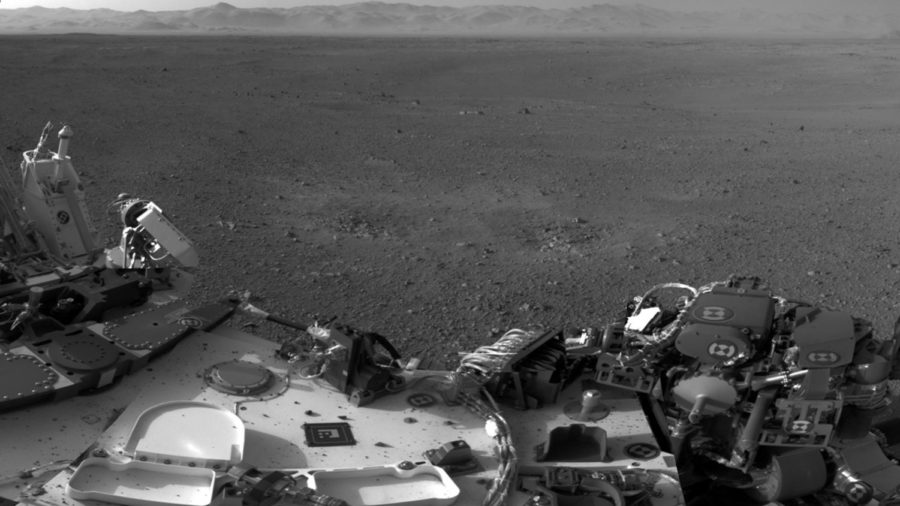Sears: Curb your otherworldly Curiosity
Photo courtesy of NASA/JPL-Calte
Opinion: Curiosity
August 20, 2012
What benefits float in space? What radical ideals or solutions in that vast vacuum await discovery not already here on Earth? The Curiosity mission’s successful landing on Mars, the United States of America’s most recent piercing of the veil, has been met with a fervor and favoritism for space exploration that has not been seen since the first launch of the space shuttle. The largest rover by far to land on Mars, the Curiosity has begun a two year career to scan and scrape 96-mile Gale crater for evidence of life and the history behind potential disappearance.
But it is with much regret that I type these next remarks, for I am captivated by the stars, the beauty of the beyond, and the possibility to pull back the curtain of the unknown. Countless books of both nonfiction and fiction — mainly science fiction — have been created upon the subject of exploring space, the consequences good and bad of exploration, and what dreams of the future will bring, and I am no stranger to these.
But many more important matters require attention than the possibility of life or the history of an arid planet. Earth has realms still not breached by humanity’s yearning eye, yet we have pressed on into the most vast frontier. There are plenty of places here that’ll quench anyone’s thirst for adventure. The Krubera Cave in the country of Georgia, the deepest known cave in the world, has been left partially unexplored due to inhospitable conditions as well cracks that permit no human being to pass through. Gangkhar Puensum is the highest mountain in Bhutan, the 40th highest mountain in the world, and the highest unclimbed mountain in the world. The Mariana Trench has yet to be fully discovered, due to the hostile pressures of 1,000 atmospheres.
I must admit though, space exploration has led to the development of wonderful technologies.
For example, in 2002, Patrick Hogan, a manager of open source projects at NASA, and his teammates at Ames Research Center -— the name is purely coincidental, for it is stationed in the Silicon Valley — developed a way to interpret and display the mountains of data collected from NASA’s voyages around the solar system. The project, called World Wind, produces 3-D visualizations of planets; and with the Department of Energy helping it go public, it has monitored climate change, air quality, security and public health from orbit.
Of course, the placement of countless satellites also provides everything from cellular communications to television to government surveillance (my favorite satellite project, though undeveloped, is the “Rods from God”).
And while these perks have benefited humanity, like a Band-Aid on a broken arm, they have not fixed many of our problems. I agree with foremer President George Bush’s remarks as he signed the decree to terminate the shuttle program in 2005: “We cannot find any justification to continue the deficit funding of a program that has no application other than proving that with enough money America can do anything.”
Of course, the Unite States has also proven that with enough deficit America can do anything as well.
Perhaps there are justifications to go into space — finding life, satisfying our question of purpose, etc. — but they are outweighed by issues unattended to here on Earth. Curiosity’s mission cost an estimated $2.5 billion; that money could’ve gone toward cancer research, genetics, the repair of roads and bridges, and scholarships. Divided, every American would be $8 richer.
Yet this rises above being purely a financial issue. No, it is not just about our money (tax payers’ dollars), but about what we the people are focusing on as a whole. Times Square was encapsulated with Curiosity’s landing, but I have yet to see Times Square fill up to watch the downward spiral of governments or the rise of improved economic systems. If we do not ground our goals into a feasible, attainable reality, then we will not be exploring the heavens anymore; we will be lost in them.

















